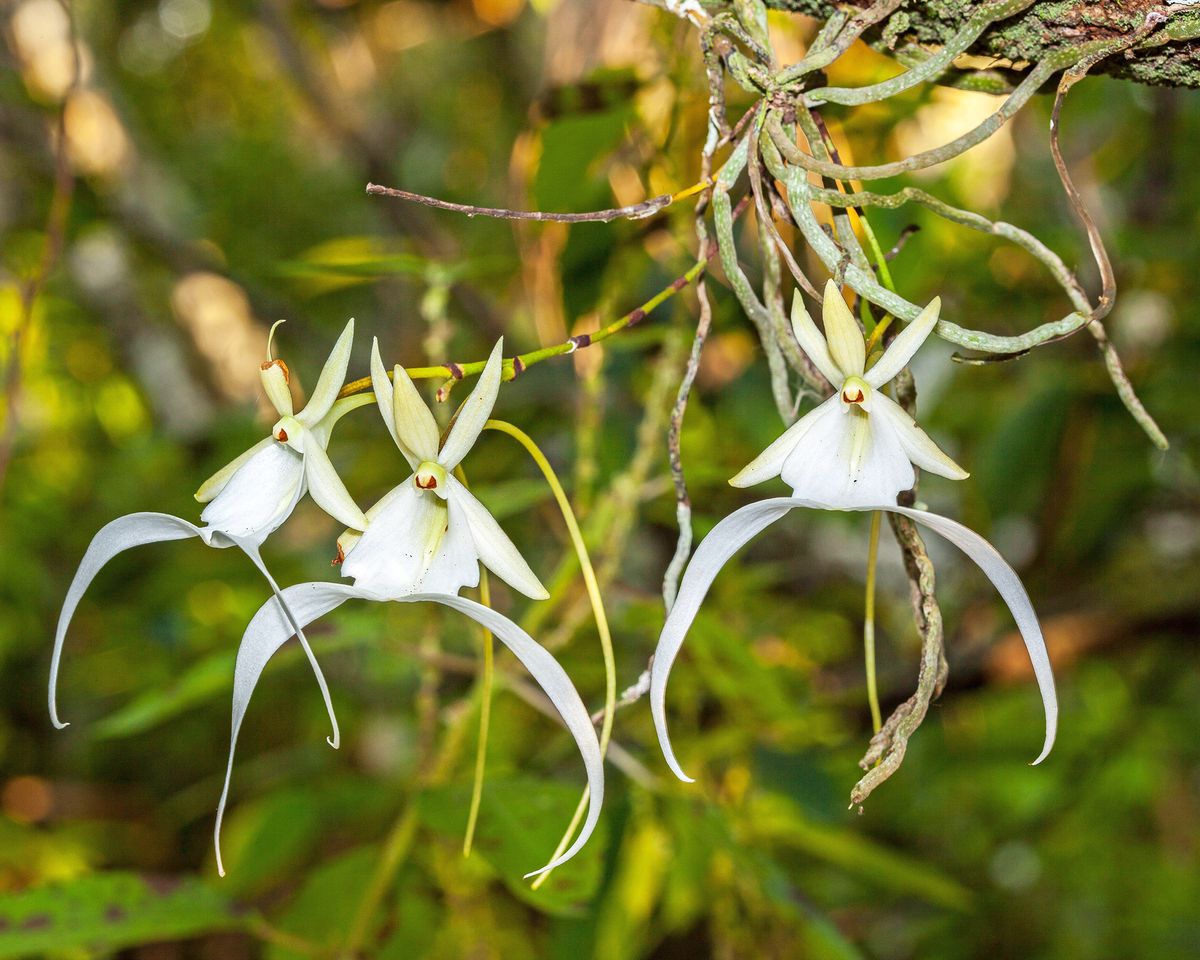The ghost orchid, a botanical phantom, casts a spell of wonder upon all who glimpse its ethereal beauty. With its otherworldly appearance and elusive nature, this orchid has captured the hearts of plant enthusiasts and nature lovers alike. Its delicate, white flowers seem to float in mid-air, defying gravity and time.
The ghost orchid, scientifically known as Dendrophylax lindenii, is a rare and endangered epiphytic orchid. It thrives in the humid, tropical environments of Florida, Cuba, and the Bahamas. Unlike most orchids, the ghost orchid lacks leaves and stems. Instead, it relies on its aerial roots to absorb moisture and nutrients from the air and its host trees.

The ghost orchid’s flowering season is a fleeting spectacle, typically occurring between June and August. During this time, the plant produces one to ten fragrant flowers that open sequentially. Each flower is a masterpiece of nature, with its long, slender petals and a distinctive, three-lobed lip. The flowers emit a sweet, fruity fragrance that attracts its primary pollinator, the giant sphinx moth.
The pollination process of the ghost orchid is a marvel of evolutionary adaptation. The giant sphinx moth, with its long proboscis, is the only insect capable of reaching the nectar deep within the flower’s lip. As the moth feeds, it inadvertently transfers pollen from one flower to another, ensuring the orchid’s reproduction.
The ghost orchid is a creature of the canopy, often found high up in the branches of large trees. It prefers humid, shaded environments and is particularly fond of cypress trees. However, its specific habitat requirements are still not fully understood, making its conservation a complex challenge.
The ghost orchid faces numerous threats, including habitat loss, poaching, and climate change. The destruction of its natural habitat, primarily due to human activities such as deforestation and urbanization, is a major concern. Additionally, the illegal collection of ghost orchids for the horticultural trade poses a significant threat to its survival.
To protect the ghost orchid, various conservation efforts are underway. These include habitat restoration, captive propagation, and public awareness campaigns. By understanding the plant’s ecology and biology, scientists and conservationists can develop effective strategies to safeguard its future.
The ghost orchid has captured the imagination of people around the world. It has been featured in numerous books, films, and television shows, often symbolizing mystery, beauty, and the fragility of nature. Its elusive nature and fleeting blooms have made it a sought-after prize for orchid enthusiasts and collectors.
The future of the ghost orchid remains uncertain. While conservation efforts are underway, the plant’s continued survival will depend on our ability to protect its habitat and reduce the threats it faces. By appreciating the beauty and ecological significance of this extraordinary orchid, we can inspire future generations to cherish and conserve it.
A: The ghost orchid is considered a rare and endangered species. It is estimated that there are fewer than 2,000 individuals remaining in the wild.
A: The ghost orchid gets its name from its ethereal appearance. Its white flowers seem to float in mid-air, resembling ghostly apparitions.
A: Growing a ghost orchid at home is extremely challenging and not recommended for most people. It requires specific environmental conditions, including high humidity, consistent temperatures, and specialized care.
A: In most regions, it is illegal to collect wild ghost orchids. These plants are protected by law, and collecting them can result in fines and other penalties.
The ghost orchid, with its otherworldly beauty and elusive nature, continues to fascinate and inspire. Its delicate flowers and intricate pollination process are a testament to the wonders of the natural world. By understanding and appreciating this extraordinary plant, we can work together to ensure its survival for generations to come.





:max_bytes(150000):strip_icc()/star-of-bethlehem-plant-profile-4774326-hero-943e35e2dc3049b1b2baa110d5fa0e71.jpg?w=200&resize=200,112&ssl=1)
